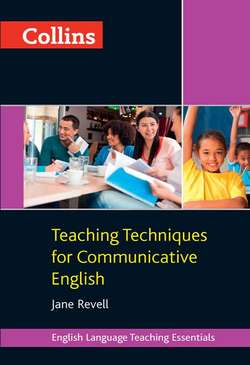Читать книгу Collins Teaching Techniques for Communicative English - Jane Revell - Страница 12
1.5 Accuracy versus fluency
ОглавлениеTeaching communicative competence means a reassessment of our attitude towards error. Having decided that perfection at the pattern drill level is not enough, and that communicative competence is our goal, are we going to allow our learners to make mistakes? And if so, to what extent and of what kind?
In the late 1970s there was a swing away from the idea that every mistake should be stamped out immediately or else the student would develop bad habits which were then impossible to get rid of. It was also believed that emphasis on correct production at all times could lead to serious inhibitions in the learner.
Instead, making mistakes was considered to be a necessary part of a foreign learner’s progress towards mastery of the language, or their ‘interlanguage’,[1:11] the sum total of their knowledge of the language at any given moment, which is constantly changing. It was thought that these mistakes would right themselves in the normal process of things as the learner received more information. They would not right themselves however unless the learner was encouraged to test out the hypotheses they are continually making about the new language, that is, unless they were given the opportunity to make mistakes.
When a learner acquires a new word or structure or function, they can only find out what the boundaries of its use are by trying it out in different contexts. If they are always terrified of making a mistake, they will never really come to master that piece of language but only have a partial understanding of it.
What this means for the classroom is that once students have had an opportunity to practise a new bit of language in a fairly controlled way, they should be able to try it out on their own without too much interference from the teacher. Hypothesis-testing mistakes must of course be corrected so that the learner can widen or narrow boundaries, but this needn’t be done on the spot. As teachers, we need to develop sensitivity as to when and how to correct (see the section ‘Dealing with Mistakes’ in Chapter 2).
